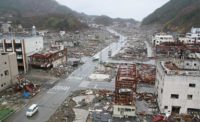Earthquake Code Presentations Go Live
The beauty of the Web is its ability to build an audience for significant presentations, even after an event has ended. A June 8 panel discussion at the National Building Museum in Washington, D.C., on the state of seismic building codes, couched in presentations of lessons learned from recent earthquakes in Chile and Haiti, is a fine example.

The presentations—by David Applegate, senior science adviser for earthquake and geologic hazards at the U.S. Geological Survey; Michael J. Armstrong, senior vice president, International Code Council; and geophysicist Michael Mahoney, Federal Emergency Management Agency—along with an audio capture of the discussion, have all been posted on the museum’s website.
Mahoney’s presentation parses the building code differences between Chile and the U.S. He guardedly concludes that, if hit by a strong temblor, new U.S. construction in high seismic zones probably would fare better than new structures in Chile because of stronger codes.
The guarded part of the reassurance comes from the fact that all U.S. codes are based on historic precedent, and every big quake teaches something new.
Applegate’s presentation offers a state-of-the-art snapshot of the tools available through the USGS for quake event analysis and reporting, and Armstrong’s delivers a comprehensive explanation of how codes are developed, revised and adopted to various degrees not only in the U.S. but in other countries as well.
The panel discussion was moderated by ENR’s Washington, D.C., bureau chief, Tom Ichniowski.




